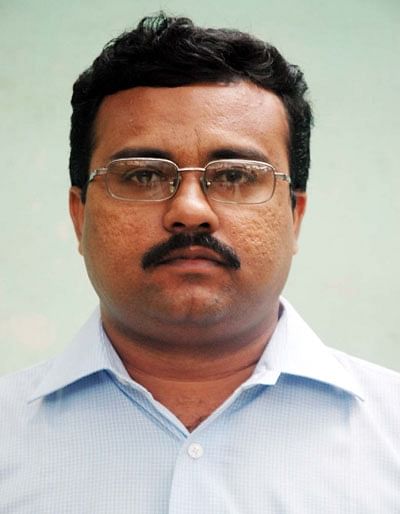Vote bank politics and skewed peace-making
On December 7, 2003, L K Advani – the Deputy Prime Minister of the then BJP-led NDA Government at the Centre – had joined thousands of Bodos in applause at Deborgaon near Kokrajhar in western Assam, when Hagrama Mahillary, the much-dreaded ‘Commander-in-Chief’ of the just-disbanded militant outfit Bodoland Liberation Tigers (BLT), had been sworn in as the interim Chief Executive Member of the newly-created Bodoland Territorial Council.
Almost nine years later, on July 30 last, Advani – now the chairman of BJP Parliamentary Party – again visited Kokrajhar and nearby areas, this time to take stock of the situation in the wake of a fierce communal strife that so far has claimed at least 78 lives and displaced over 4,00,000 people, primarily Muslims and Bodos. And, on August 8 last, he told the Lok Sabha that the bloodshed in and around Kokrajhar should not be seen as a “Hindu versus Muslim issue”, but as a result of the conflict between Assam’s indigenous people and the illegal migrants from neighbouring Bangladesh.
It is, however, difficult to take out the religious connotation from the discourse on illegal migration from Bangladesh. It is, indeed, because of the religious identity of the illegal migrants that their influx turned into such a highly-politicised issue in the northeastern State. The shrill rhetoric of the All Assam Students Union, which led the 1979-85 agitation against illegal migration, and the Asom Gana Parishad, the political party born out of the fabled stir, often seeks to portray every Bengali-speaking Muslim as an illegal migrant from Bangladesh. It refuses to recognise the historical fact that Assam had a sizeable population of Bengali-speaking Muslims in its western districts even before the Partition of 1947. Similar is the campaign line of the BJP, which has since long been trying to eat into the AGP’s support-base and emerge as a political alternative to the regional party that suffered a series of electoral setbacks over the past 10 years.
The Congress, on the other hand, always plays down the influx of a large number of illegal migrants from across the porous border with Bangladesh, obviously because the growing population of Bengali-speaking Muslims – both illegal migrants as well as the descendants of original inhabitants before Partition – has been a vote bank that held the key to its electoral successes in the State.
Fight for land rights
The bloodbath that Assam is witness to since July 19 last has, indeed, nothing to do with religion. Neither can it be seen as a result of the conflict between Assam’s ‘indigenous’ population and illegal migrants from Bangladesh.
It is rather the outcome of a conflict over access to land and other resources between the Bodos and non-Bodos in the Bodoland Territorial Autonomous District (BTAD), which the then NDA Government at the Centre and the Congress Government in the State created in 2003 to buy peace from the BLT. And the non-Bodos include communities like Koch-Rajbangshi, Rabha and Adivasi as well as Bengali or Assamese speaking Hindus and Muslims. They all allege that they have lost their political rights and have been reduced to ‘second-class citizens’ after the BTAD was created under the Sixth Schedule of the Constitution. The structure of the autonomous council ensured hegemony of the Bodos, who – despite being the largest plains tribe of Assam – are not the majority community in the BTAD areas.
Even when Advani had joined the Bodos celebrating the creation of the BTAD in 2003, the anti-Bodo sentiment was running strong. The Sammilita Janagosthiya Sangram Samiti – an amalgam of 18 organisations representing the non-Bodos – had called for a 100-hour shutdown to protest against the deal the Centre and the State Government had struck with the BLT militants. Even after nine years, the non-Bodos – irrespective of their religious, linguistic and ethnic identities – continue to demand a revision of the central and state governments’ peace-agreement with the BLT, as they allege that the Bodos did not share with them the fruits of development the BTAD areas have seen since 2003.
The Centre’s deal with the BLT, however, could not end the insurgency and a fresh peace process is currently on with a faction of another outfit, National Democratic Front of Bodoland. The Bodos’ growing aspiration for more autonomy or possibly a separate state has added to the apprehensions of the non-Bodos.
Media role
This time round, it is media coverage that brought the latest Assam violence to centre-stage of national discourse and its ripple effects could be seen in faraway Mumbai.
Kokrajhar and its adjoining areas have witnessed many such violent clashes in the past, between the Bodos and non-Bodo communities like Adivasis or Bengali-speaking Hindus and Muslims.
Migration and settlement expansion by different communities over the years have resulted in a unique situation in Assam and other places in North-East, where no territory belongs to a particular community.
The various governments’ approach of engaging the militia of one particular community in peace process, and even striking a deal, excluding other groups, has sparked off many carnages in the past – such as between the Bodos and non-Bodos or Karbis and Kukis or Karbis and Dimasas.
The Centre’s peace making with National Socialist Council of Nagaland too triggered tensions between the Nagas and other communities like Meiteis and Dimasas. New Delhi needs to review its policy of making peace in troubled North-East, indeed.
Related Stories:
Terrorised, in one’s own land
Age-old procedure and inaction
